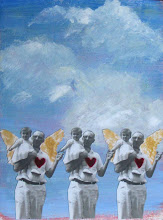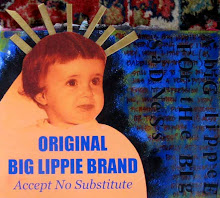

I recently got into a rather heated debate with someone about talent and skill within the various genres of art. I'm not even sure how we went from a rather pleasant conversation about art in general to an ugly little verbal boxing match about how much skill is required to execute a particular piece of work, but spar we did.
I am of the belief that it required less technical skill for, say, Hoffman to create a modernist piece than for Monet to have painted a classical portrait. To paint an abstract work is not the same thing as painting a realistic human portrait or landscape and does, I believe, require far less skill. This is not to say that one can paint that abstract work without artistic talent. One can always find at least a handful of people standing before an abstract work in a gallery or museum loudly announcing that their five year old could do that same thing and no one is paying their child millions of dollars for their identical scribbly, splotchy mess. Those artistically ignorant people aside, I stand firm in my belief that it requires more skill to paint something from life as opposed to something comprised entirely of abstract shapes and blocks of color. And while it isn't necessarily true that anyone could paint an abstract work of art, be they artistically inclined or not, but if given a set of paints and a brush and told to make either an abstract piece or a classical portrait, most people would be far more successful at executing the abstract piece than they would the Mona Lisa.
The person with whom I was having this discussion, when he shouted that Picasso's Guernica is considered the greatest work of modern art ever created, was clearly and entirely missing my point. Working on a piece that requires less technical skill in no way means that an artist has no talent, nor does working on a technically simpler piece mean that one is a lesser artist. I would be insane to even think that Picasso was a talentless hack based on his cubist and modernist works. Picasso was a genius and his early classical drawings and paintings reflect a level of technical skill that his later works don't, in my humble opinion, always reflect. But I also will never be swayed in my personal belief that, regardless of how difficult it may be to create an abstract work of art, to execute one will never require the level of technical skill that a classical work requires. Yell at me if you will, on this I firmly stand my ground.
Claude Monet, Woman in the Green Dress (Camille), 1866
Hans Hoffman, The Gate, 1959-1960









